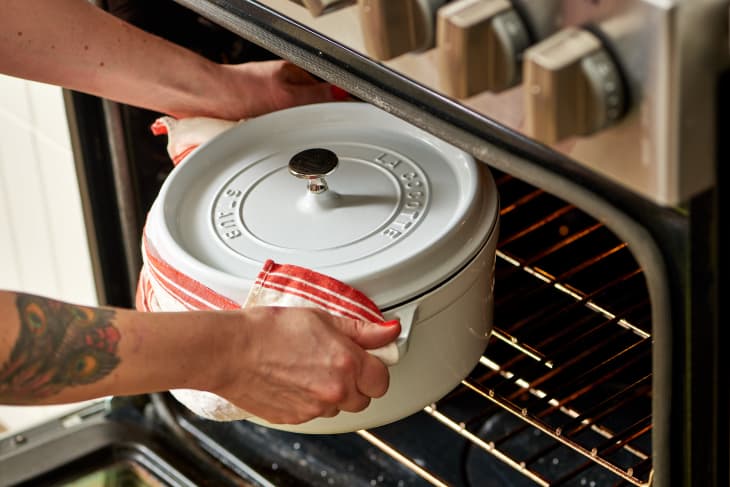Why Is it Called a “Dutch Oven” Anyway?
The kinds of long-cooked stews and deep, rich dishes most people make in their Dutch ovens are hardly the type of foods most associated with the Netherlands. Nor is Le Creuset, the company best known for making the heavy, thick-walled pots, located in France. Yet, even as the tight-lidded, versatile, and iconic vessel is used to make everything from Mexican mole to no-knead bread, we call it “Dutch.” (Also, it isn’t anything like what we would consider an oven these days.)
So, how did the often-colorful, much-coveted pot end up being called a “Dutch oven?”
The Origin of the “Dutch Oven” in the Netherlands
The Dutch, says Le Creuset Director of Marketing Communications, Will Copenhaver, developed a technique for casting metals in molds made of sand. Traditionally, clay molds were used, but this 17th century innovation allowed smoother finishes and lent itself well to the production of iron cookware, like the type of kettle used at the time to cook over open flame.
In Dutch Ovens Chronicled: Their Use in the United States author John G. Ragsdale tells one version of the Dutch method’s migration: In 1704, a man named Abraham Darby traveled to Holland to research such things, saw the sand-molding method, and brought it back to England. He worked to adapt it to his own purposes and patented the process by 1708.
Darby soon produced large numbers of the pots and by later that century, his Coalbrookdale plant had sent the pots around the world, including to what would soon become the United States. But the Dutch oven name hadn’t stuck yet: Ragsdale reports that the vessels “were given descriptive names such as dinner pots, Gypsy pots, bean pots, stew pots, and stock pots, plus many local or family names.”
Darby’s story is plausible, but Dutch-oven authorities poke holes in it. Another author, J. Wayne Fears, in his Complete Book of Dutch Ovens, points to Dutch traders traveling through the colonies with these newly manufactured pots for sale, hence the name.
How the Dutch Oven Found a Home in France
By the time Le Creuset began making the ovens in the 1920s, says Copenhaver, the Dutch oven found a home in France. “French cuisine was undergoing a seismic shift,” and Escoffier, with his innovative brigade system, changed restaurant dining into a more accessible activity. “These new diners brought with them tastes for traditional peasant fare like coq au vin and boeuf Bourguignon.”
The original shape and style of Le Creuset ovens are designed for these dishes, with the non-porous interior enamel allowing for easy cleaning and eliminating the need to season the cast iron. Although the old-school cooker was historically used over an open flame, its smooth surface and heatproof design make it the perfect multi-tasker for the modern kitchen — it fries, bakes, braises, and roasts.
The name “Dutch oven” doesn’t give much of a hint of the versatility of the simple pot, but it does, perhaps, pay some homage to its origins.
****
Ragsdale still casts a dubious eye toward the casting method as the definitive source for the Dutch oven name, but accepts it as the most plausible. Le Creuset, on the other hand, buys it wholeheartedly: a refined version of that original Dutch sand-casting method, Copenhaver says, is still used at their foundry in France. And thanks to our global world, that French pot made using a Dutch method is just as likely to be employed to cook a Japanese hot pot or Southern fried chicken as a Provençal stew.
